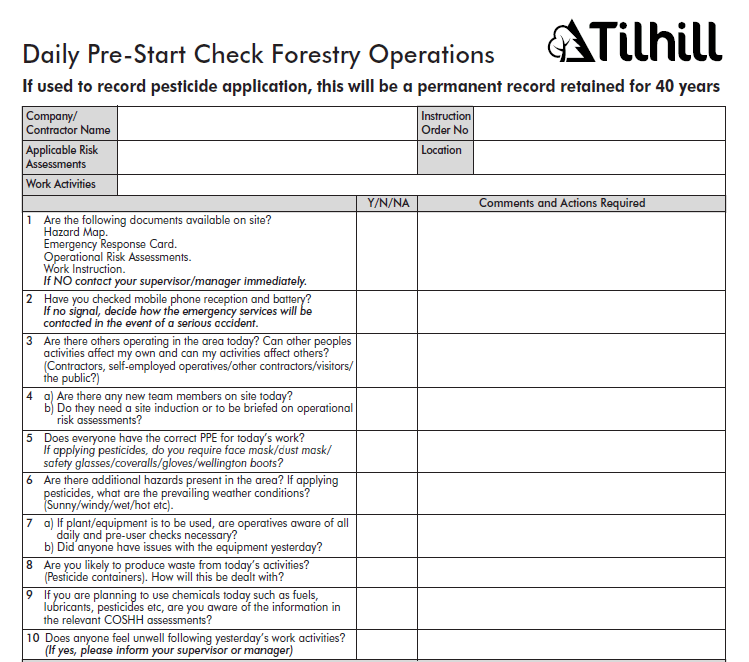So why do we get a sense of dread when someone asks us if we have done a risk assessment? Undertaking a risk assessment and writing it down is an important step in controlling risk. It is an opportunity to stop and consider the risks presented by the site, the tasks and the equipment. If this is done solely dynamically, or ‘on the job’ then we tend to only consider what we see in front of us. Having a reflective practice allows us to consider the risks in a systematic way.
It is important that risks and controls are reviewed daily. The lead story in this Bulletin focuses on the changing conditions on site, couple this with third party activity and unexpected events, and we can see how the daily assessment of the risks on that day, in that place, is vital.
This should be a very practical review of the work to be done in that environment and how it can be completed safely. This is recorded on Daily Risk Assessments or Point of Work Risk Assessments.
Creating a risk assessment is not a critique of your spelling or hand-writing. Neither does it need to be pristine in its presentation. Better to be a scruffy hand-written assessment than a typed up version created after the event. They just need to be legible. Risk Assessment isn’t about paperwork for the file, it’s primary role is to facilitate us stopping and consider how harm may be done and how we will prevent or reduce that harm.
It is important that everyone on site is briefed, understands and signs up to the risk assessment, not just those at the pre-commencement meeting. If a visitor, including a Tilhill Manager, comes to site, they should be briefed on the key risks and controls when they arrive.
Risk assessment is not something to be worried about, they help us consider our risks, agree controls and brief everyone so harm is prevented.




